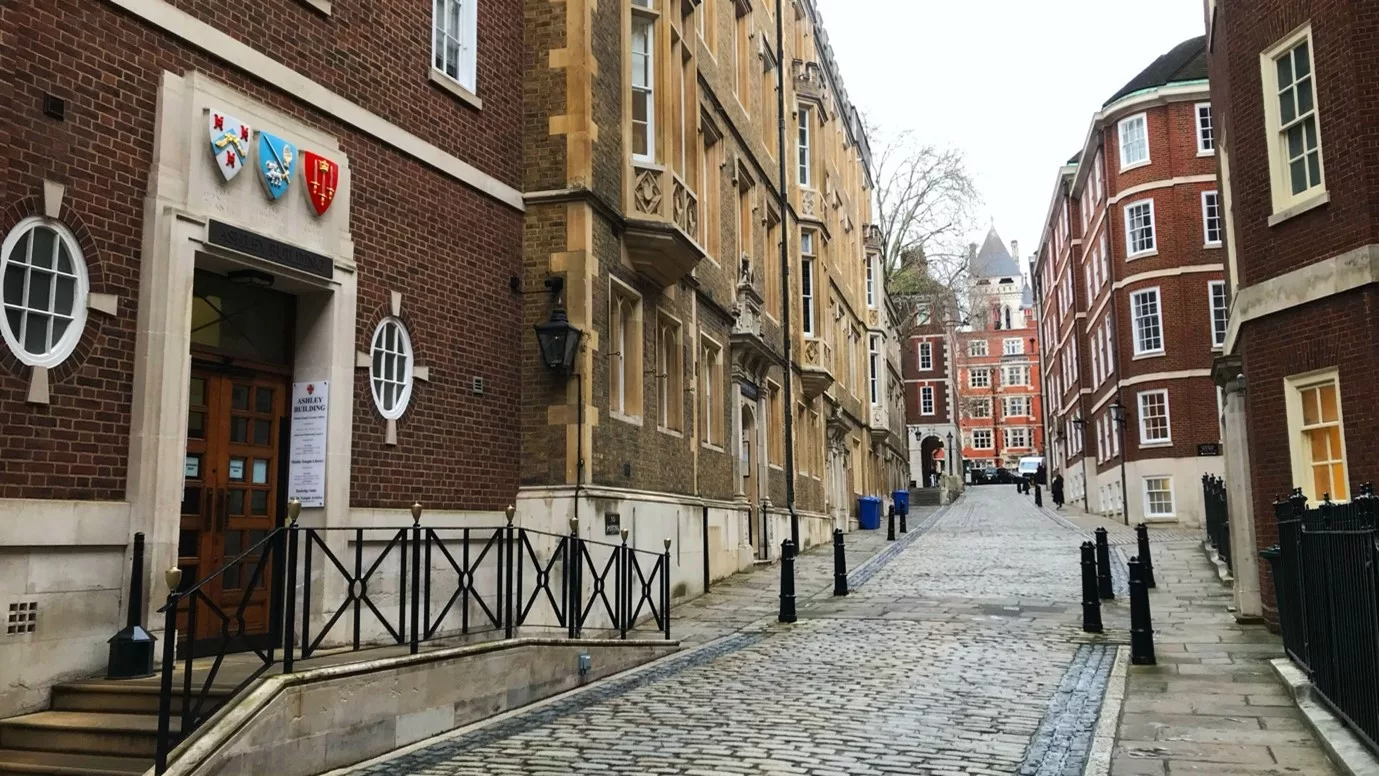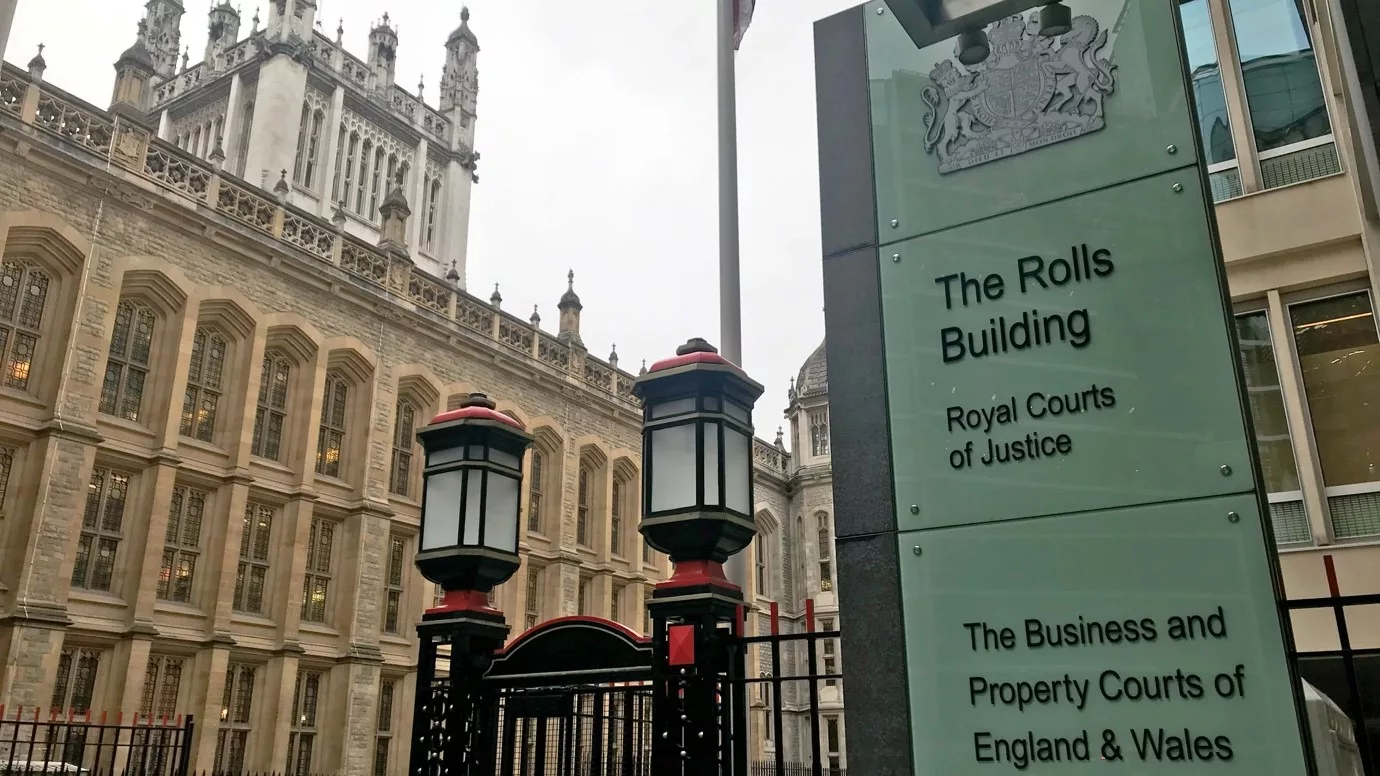|
Getting your Trinity Audio player ready...
|
Sky blue three-piece pinstripe, purple silk tie, silver tie clip, shiny black shoes, red laces, red socks: Craig Wright dresses like your classic old school millionaire—more Gatsby than Gates. It’s a surprising look for someone who says he never wanted to be recognised in public.
Compared to Dr. Wright, the judge looks positively under-dressed in a plain black academic gown with two red ribbons. I’d expected a doddery old fellow with a curly wig, a little hard of hearing. But Mr Justice Mellor, who looks younger than his 62 years, reminds me of the friendly neighbour you spot working on a big DIY project on a Saturday morning.

The courtroom (or “super-court” as it’s called because it’s one of the biggest) is modern and characterless. The lack of traditional flummery is a little disappointing. I’d arrived by walking through London’s old Inns of Court (above) which look like they haven’t changed since Dickens’ day. It’s easy to imagine that Bleak House’s Jarndyce v Jarndyce case is still grinding on in one of the ancient quadrangles.
But the Rolls Building (below) is different: standard airport-style security on the way in and instead of creaky staircases, smooth, modern lifts (“A lift m’lud? A small, mobile compartment for transport between floors by a system of pulleys and motors.”)

This is day three of COPA vs Wright—the case that’s billed as finally proving or disproving Dr. Wright’s claim to be the inventor of Bitcoin. Each day I’ve arrived a little earlier until today, for the first time, I have a place in the main courtroom. Previously all the spectator seats have already been filled and I’ve been sent down to the overspill room where you can watch the case on a big screen.
The overspill room is delightfully cool. There is a problem with the whole building’s heating system which means that half the rooms, including the super-court, are horribly overheated. Dr. Wright’s counsel, Lord Grabiner, stood up before lunch on Tuesday to complain that “the working atmosphere in this room is extremely oppressive.” And he wasn’t talking about the way his client was being questioned by COPA’s lawyer. The judge sympathised, adding “it’s even worse up here.” He said he was trying to get it fixed but that wouldn’t be possible until Friday at the earliest. It was the only sign of Dickensian inefficiency I have come across. Today the judge opened proceedings with the glad tidings that tomorrow they can move to a different court, which will still be hot but will be “four degrees cooler.” (He has an engineering background and likes his numbers.)
Dr. Wright is in a black suit today. One of my fellow spectators turned to his friend and asked “I wonder when he’s going to run out of suits? Is he going to have enough for the whole trial?”
Now the morning is over and I’m in a café across the road, surrounded by lawyers having their lunch. Conversation drifts over from the next table: “well that’s the most amended section of the CPR!” Hearty laughter all round. You’d need years of training to find that funny.
The morning saw more of Jonathan Hough KC questioning Dr. Wright on behalf of COPA, the alliance of companies who are his opponents. This is only the second of six days when he’ll be on the stand. A pattern soon emerged which goes something like this:
Q: This is one of your Reliance Documents, Dr. Wright? [The documents he has put forward to support his claim to be Satoshi Nakamoto, the inventor of Bitcoin.]
A: Yes.
Q: Our forensic expert says its metadata shows it was written later than you are claiming—it’s been manipulated and backdated, hasn’t it?
A: No. Your expert hasn’t been trained on the right software and corporate systems. If he’d only done some experiments, he’d see what happens when a document like that is run with software x, y or z.
AND/OR: I have only presented these documents for their contents—to show my thinking before the creation of Bitcoin. My staff have been using them for years and they have been sent to the lawyers from the company computer network or individual staff laptops, so of course their metadata shows that.
Q: Can I put it to you that that is just “a tissue of lies”/”it beggars belief….”/“this is another fairy story, isn’t it Dr. Wright?”
A: No.
When he gets to the end of a section like that, Mr. Hough appears almost washed away by Dr. Wright’s fluent stream of incomprehensible technicalities. His professional skill is in resisting the temptation to get into an argument about them. Instead, he just lets Dr. Wright’s last answer hang there and leaves a long sceptical pause, which is far more eloquent than any attempted riposte. Then he moves on to the next document.
Dr. Wright appears helpful, even if he does have to keep repeating himself. He answers “yes” with some spirit each time Mr. Hough asks him to confirm that he can see what’s on the screen in front of him. You might almost think he’d been invited along to give a lecture on his favourite subject.
Once in a while he shows signs of trying to get the judge on side, turning to him with remarks such as “my lord, as a person who studied engineering you will know…” or more elaborately, “my lord, you are unique like some of us in that you are an engineer and a computer scientist.”
He’s met with a practiced poker face. The Honourable Sir Edward James Mellor takes it all in his stride, standing throughout proceedings behind his six screens, up there in the hottest part of the room. I wonder if he is ever distracted by the thought of some complicated DIY project he’s planning for next weekend?

 12-29-2025
12-29-2025 




